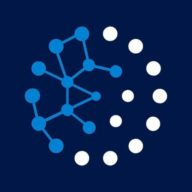The Dark Web of Spyware: How Commercial Exploits Fuel State-Sponsored Hacking
August 30, 2024, 4:19 pm
In the shadows of cyberspace, a dangerous game unfolds. Commercial spyware vendors (CSVs) sell sophisticated hacking tools, promising to target only the worst of the worst. Yet, these tools often slip through the cracks, landing in the hands of malicious actors. Recent findings from Google’s Threat Analysis Group (TAG) reveal a troubling connection between these vendors and Russian state-sponsored hackers. The implications are vast and alarming.
The digital landscape is a battlefield. On one side, we have the commercial surveillance vendors like NSO Group and Intellexa, who create powerful exploits. On the other, state-sponsored hackers, such as APT29, are ready to wield these tools for their own ends. The line between lawful surveillance and malicious hacking blurs dangerously.
Google’s TAG has unearthed evidence that APT29, linked to Russia’s Foreign Intelligence Service (SVR), is using exploits that are nearly identical to those sold by these commercial vendors. This revelation raises a crucial question: How did these hackers obtain such sophisticated tools? The answer remains murky, but the consequences are crystal clear.
APT29 is notorious for its stealthy operations. They employ tactics like watering hole attacks, where they infect websites frequented by their targets. In this case, they targeted Mongolian government sites, embedding exploits that took advantage of vulnerabilities in popular browsers like Safari and Chrome. Visitors to these sites were unwittingly exposed to cookie-stealing attacks, compromising sensitive government accounts.
The timeline of these attacks is chilling. From November 2023 to July 2024, APT29 exploited known vulnerabilities that had been patched but were still present on unupdated devices. This tactic is a stark reminder of the importance of timely software updates. Users who delay patches leave themselves vulnerable to attacks that exploit these very weaknesses.
The exploits used by APT29 were not just random. They mirrored the techniques developed by NSO Group and Intellexa. In one instance, the code used by APT29 to exploit a flaw in the WebKit browser engine was strikingly similar to an exploit from Intellexa. This raises eyebrows. How did APT29 gain access to such specific and powerful exploits?
Possibilities abound. Perhaps they purchased the exploits from a broker. Maybe they stole the code from a less secure source. Or, they could have had help from insiders within the CSVs. Regardless of the method, the outcome is the same: dangerous tools are falling into the wrong hands.
The commercial spyware industry operates under a veil of legitimacy. Companies like NSO Group and Intellexa assert that they only sell their tools to governments with good standing. Yet, the evidence suggests otherwise. The exploits developed for lawful surveillance are being repurposed for state-sponsored cyber warfare. This is a ticking time bomb.
The ramifications extend beyond Mongolia. If Russian hackers can access these tools, what’s stopping other malicious actors? The digital world is interconnected. A vulnerability exploited in one country can easily spread to others. The potential for chaos is immense.
Moreover, the growing sophistication of these attacks highlights a significant gap in cybersecurity. Governments and organizations must prioritize security measures. This includes not only regular software updates but also comprehensive training for employees on recognizing phishing attempts and other cyber threats.
The battle against cybercrime is ongoing. As technology evolves, so do the tactics of hackers. The commercial spyware industry must be held accountable. Stricter regulations are needed to prevent these tools from being misused. Transparency is key. Without it, the cycle of exploitation will continue.
The situation is dire. APT29’s use of commercial exploits is a wake-up call. It underscores the need for vigilance in the face of evolving threats. Cybersecurity is not just an IT issue; it’s a national security concern. Governments must collaborate to combat this growing menace.
In conclusion, the intersection of commercial spyware and state-sponsored hacking presents a formidable challenge. The evidence from Google’s TAG paints a grim picture. As long as these powerful tools are available, the risk of exploitation remains high. The digital realm is a double-edged sword. It can be a tool for progress or a weapon for destruction. The choice is ours, but the clock is ticking.
The digital landscape is a battlefield. On one side, we have the commercial surveillance vendors like NSO Group and Intellexa, who create powerful exploits. On the other, state-sponsored hackers, such as APT29, are ready to wield these tools for their own ends. The line between lawful surveillance and malicious hacking blurs dangerously.
Google’s TAG has unearthed evidence that APT29, linked to Russia’s Foreign Intelligence Service (SVR), is using exploits that are nearly identical to those sold by these commercial vendors. This revelation raises a crucial question: How did these hackers obtain such sophisticated tools? The answer remains murky, but the consequences are crystal clear.
APT29 is notorious for its stealthy operations. They employ tactics like watering hole attacks, where they infect websites frequented by their targets. In this case, they targeted Mongolian government sites, embedding exploits that took advantage of vulnerabilities in popular browsers like Safari and Chrome. Visitors to these sites were unwittingly exposed to cookie-stealing attacks, compromising sensitive government accounts.
The timeline of these attacks is chilling. From November 2023 to July 2024, APT29 exploited known vulnerabilities that had been patched but were still present on unupdated devices. This tactic is a stark reminder of the importance of timely software updates. Users who delay patches leave themselves vulnerable to attacks that exploit these very weaknesses.
The exploits used by APT29 were not just random. They mirrored the techniques developed by NSO Group and Intellexa. In one instance, the code used by APT29 to exploit a flaw in the WebKit browser engine was strikingly similar to an exploit from Intellexa. This raises eyebrows. How did APT29 gain access to such specific and powerful exploits?
Possibilities abound. Perhaps they purchased the exploits from a broker. Maybe they stole the code from a less secure source. Or, they could have had help from insiders within the CSVs. Regardless of the method, the outcome is the same: dangerous tools are falling into the wrong hands.
The commercial spyware industry operates under a veil of legitimacy. Companies like NSO Group and Intellexa assert that they only sell their tools to governments with good standing. Yet, the evidence suggests otherwise. The exploits developed for lawful surveillance are being repurposed for state-sponsored cyber warfare. This is a ticking time bomb.
The ramifications extend beyond Mongolia. If Russian hackers can access these tools, what’s stopping other malicious actors? The digital world is interconnected. A vulnerability exploited in one country can easily spread to others. The potential for chaos is immense.
Moreover, the growing sophistication of these attacks highlights a significant gap in cybersecurity. Governments and organizations must prioritize security measures. This includes not only regular software updates but also comprehensive training for employees on recognizing phishing attempts and other cyber threats.
The battle against cybercrime is ongoing. As technology evolves, so do the tactics of hackers. The commercial spyware industry must be held accountable. Stricter regulations are needed to prevent these tools from being misused. Transparency is key. Without it, the cycle of exploitation will continue.
The situation is dire. APT29’s use of commercial exploits is a wake-up call. It underscores the need for vigilance in the face of evolving threats. Cybersecurity is not just an IT issue; it’s a national security concern. Governments must collaborate to combat this growing menace.
In conclusion, the intersection of commercial spyware and state-sponsored hacking presents a formidable challenge. The evidence from Google’s TAG paints a grim picture. As long as these powerful tools are available, the risk of exploitation remains high. The digital realm is a double-edged sword. It can be a tool for progress or a weapon for destruction. The choice is ours, but the clock is ticking.

